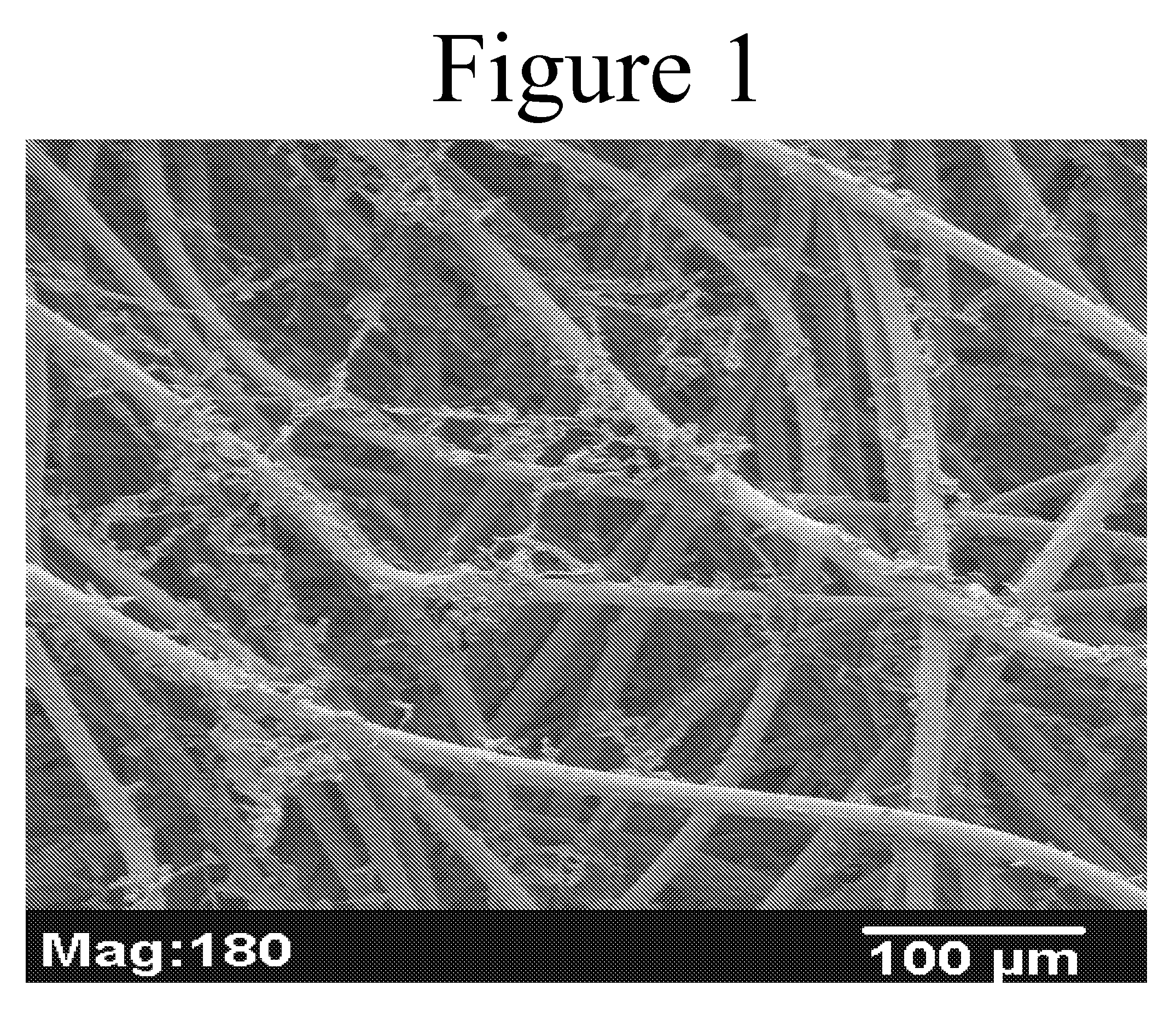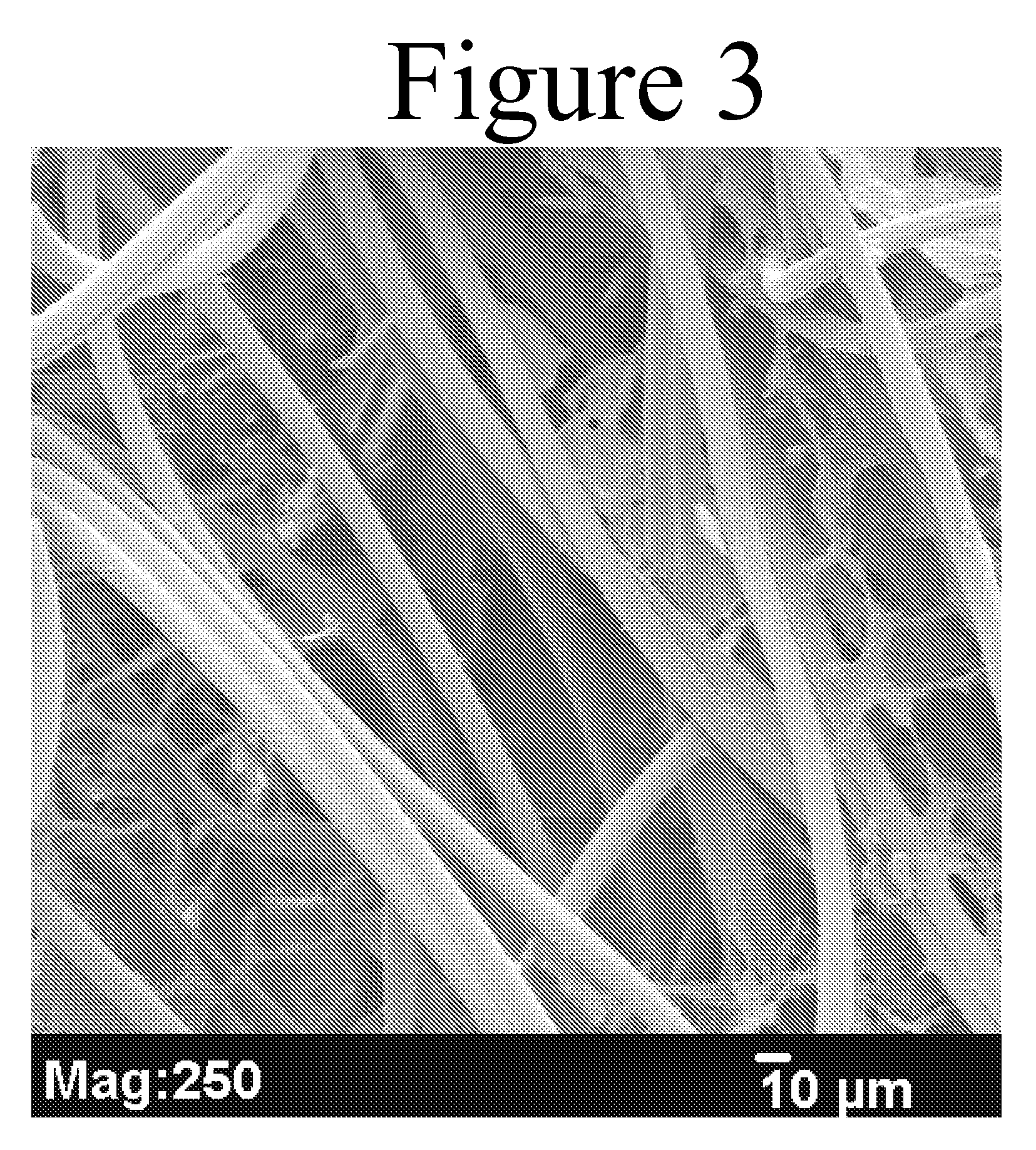Composite Scaffolds Seeded with Mammalian Cells
a technology of mammalian cells and composite tissue, which is applied in the field of composite tissue scaffolds seeded with mammalian cells, can solve the problems of limited durability, loss of functional tissue, and insufficient restoration of tissue function, and achieves the effect of increasing the production of the desired extracellular matrix and enhancing the retention of mammalian cells
- Summary
- Abstract
- Description
- Claims
- Application Information
AI Technical Summary
Benefits of technology
Problems solved by technology
Method used
Image
Examples
example 1
Forming a Composite Scaffold
[0070]A needle-punched nonwoven mat (2 mm in thickness) composed of 90 / 10 PGA / PLA fibers was made as described below. A copolymer of PGA / PLA (90 / 10) was melt-extruded into continuous multifilament yarn by conventional methods of making yarn and subsequently oriented in order to increase strength, elongation and energy required to rupture. The yarns comprised filaments of approximately 20 microns in diameter. These yarns were then cut and crimped into uniform 2-inch lengths to form 2-inch staple fiber.
[0071]A dry lay needle-punched nonwoven mat was then prepared utilizing the 90 / 10 PGA / PLA copolymer staple fibers. The staple fibers were opened and carded on standard nonwoven machinery. The resulting mat was in the form of webbed staple fibers. The webbed staple fibers were needle punched to form the dry lay needle-punched, fibrous nonwoven mat.
[0072]The mat was scoured with ethyl acetate for 60 minutes, followed by drying under vacuum.
[0073]A solution of t...
example 2
Forming a Composite Scaffold
[0078]A biodegradable composite scaffold was fabricated following the process of Example 1, except the polymer lyophilized into a foam was a 60 / 40 PLA / PCL copolymer from Birmingham Polymers Inc., Birmingham, Ala., with an I.V. of 1.45 dL / g. The pore size of this composite scaffold was determined using Mercury Porosimetry analysis. The range of pore size was 1-300 μm with a median pore size of 45 μm.
example 3
Forming a Composite Scaffold
[0079]A biodegradable composite scaffold was fabricated following the process of Example 1, except the polymer lyophilized into a foam was a 50:50 blend of 60 / 40 PLA / PCL and 35 / 65 PCL / PGA copolymers from Birmingham Polymers Inc., Birmingham, Ala., with I.V.s of 1.50 dL / g and 1.45 dL / g, respectively.
PUM
| Property | Measurement | Unit |
|---|---|---|
| Biological properties | aaaaa | aaaaa |
| Molar ratio | aaaaa | aaaaa |
| Biocompatibility | aaaaa | aaaaa |
Abstract
Description
Claims
Application Information
 Login to View More
Login to View More - R&D
- Intellectual Property
- Life Sciences
- Materials
- Tech Scout
- Unparalleled Data Quality
- Higher Quality Content
- 60% Fewer Hallucinations
Browse by: Latest US Patents, China's latest patents, Technical Efficacy Thesaurus, Application Domain, Technology Topic, Popular Technical Reports.
© 2025 PatSnap. All rights reserved.Legal|Privacy policy|Modern Slavery Act Transparency Statement|Sitemap|About US| Contact US: help@patsnap.com



